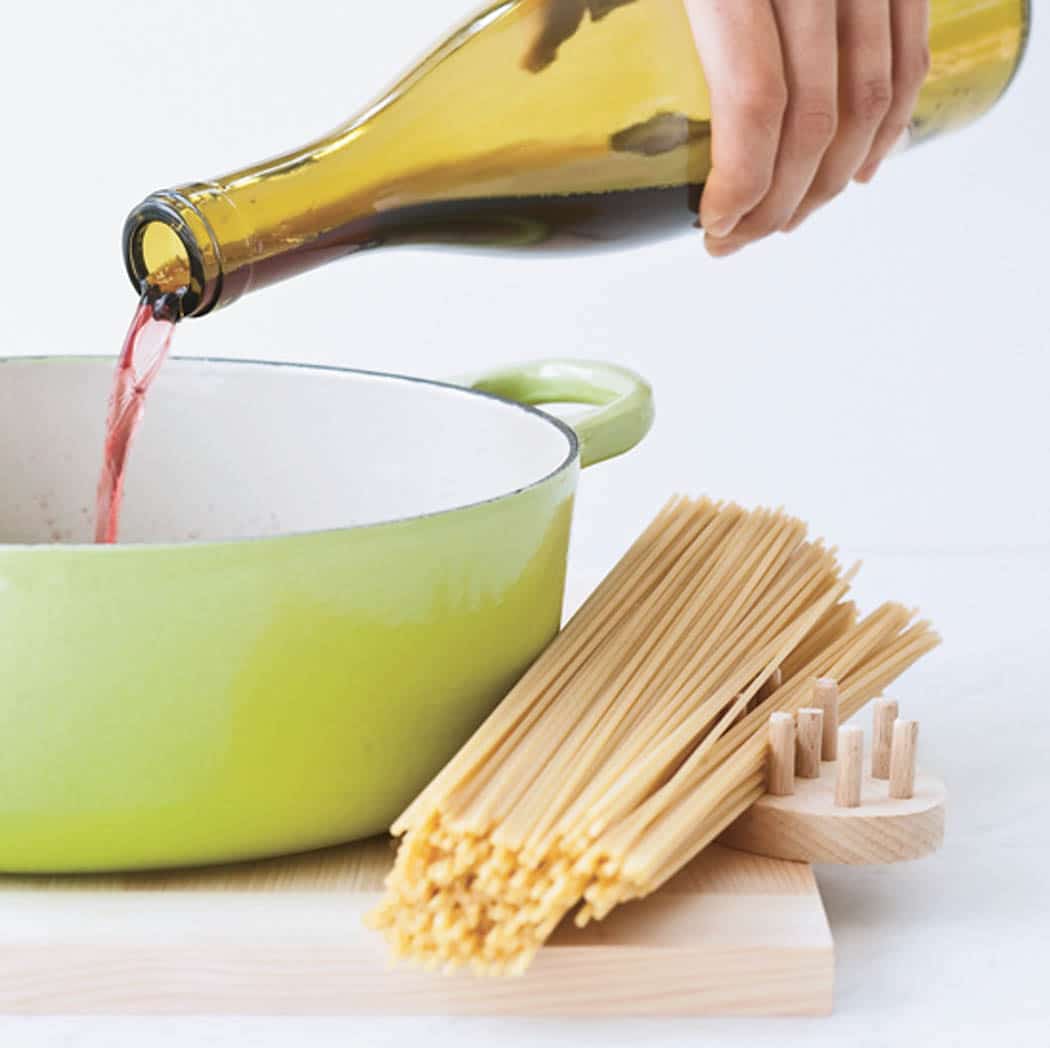Domestic Details: Cooking with Wine 101
This post may contain affiliate links. Read about my affiliate policy.
 I’ve expressed my love of drinking wine many times, but I have yet to discuss cooking with it in any detail. For that, I sincerely apologize because wine is awesome, and it’s a magical ingredient in so many delicious recipes. Whether added to marinades, cooking liquids and sauces, or simply used to finish a dish, a little bit of wine can go a long way in enhancing the flavor and aroma of your culinary creations. Plus, cooking with wine feels fancy. Fact.
I’ve expressed my love of drinking wine many times, but I have yet to discuss cooking with it in any detail. For that, I sincerely apologize because wine is awesome, and it’s a magical ingredient in so many delicious recipes. Whether added to marinades, cooking liquids and sauces, or simply used to finish a dish, a little bit of wine can go a long way in enhancing the flavor and aroma of your culinary creations. Plus, cooking with wine feels fancy. Fact.
Sadly, while many of you are comfortable drinking wine, some of you have expressed hesitation when it comes to cooking with it. I get it. Adding alcohol to your food may seem weird and scary. That said, with a few tips and a handy wine chart, you too can be a full-blown wino in the kitchen! (That sounds wrong, but you know what I mean.)
4 Essential Tips for Cooking with Wine:
1. Don’t cook with wine you wouldn’t drink. I’m sure you’ve heard this before, and it’s true. Obviously, there’s no need to break the bank, peeps. (Save your money for important things like beef tenderloin and shoes.) Something in the 10-dollar range is totally classy and acceptable. For the record: NEVER USE COOKING WINE. EVER. “Cooking wines” have a high salt content and other additives that will make your food taste, for lack of a better word, shitty. There is a reason that cooking wines are stocked alongside vinegars in the grocery store, friends. Please leave them there.
2. Add wine early and use a responsible amount. When using wine in a sauce or cooking liquid, you’ll want to add it first, and let most of it cook off before adding another liquid (stock, cream, etc.). “Uncooked wine” actually has a taste, and it’s not a good one. A good rule of thumb is to allow wine to cook for at least ten minutes in a dish before tasting it and go from there. Too little wine won’t add much to the flavor party, too much and you’ll have a literal hot mess on your hands. Oh, and please refrain from dumping a bunch of wine into recipes at the end “for flavor.” That is not a thing.
3. If you screw up, try a “ghetto fix.” In case you blacked out when reading tip number 2, or you had some sort of horrific accident that led to adding way too much wine and/or adding it too late, don’t panic. All is not lost. Actually, it might be, but ever the domestic optimist, I recommend trying the great Alex Guarnaschelli’s ghetto fixes for wine mishaps. First, throw in a little more butter or olive oil. The richness will help balance out the wine taste. If that doesn’t work, you can try adding some cooked and pureed onions to a savory dish, or similarly prepared apples to a fruit dish to tone down the wine flavor. Fingers crossed!
4. Choose the right wine for your dish. For those who are not wine connoisseurs, The most confusing aspect of cooking with wine is when a recipe calls for something like a “young, full-bodied red.” There was a time in my culinary career when I would see such a description, and think to myself, “Well, I bought this wine yesterday and it’s in a full bottle, so it is young and full-bodied, yes?” If you have ever had similar thoughts, I have compiled a handy cheat sheet of wine descriptors and some accompanying varietals to help you out.
| The Recipe Calls For… | Try Using… |
| Young, Full-Bodied Red | Cabernet Sauvignon, Bordeaux, Syrah, Zinfandel |
| Young, Robust Red | Rioja, Beaujolais Nouveau |
| Earthy, Full-Bodied Red | Pinot Noir, Cabernet Franc |
| Medium-Bodied Red | Merlot, Shiraz, Chianti |
| Dry White | Chardonnay, Chenin Blanc, Sauvignon Blanc, Dry Riesling |
| Fruity White | Gewurztraminer, Riesling, Semillon, Muscat |
| Sweet White | Sauternes |
| Fortified | Marsala, Vermouth, Sherry, Port, Madeira (The recipe should give you some clear guidelines on the “fortified” front. Not all of these are interchangeable.) |
| Sparkling | Champagne, Prosecco |
What if a recipe doesn’t give you any specifics and just says “white” or “red” wine? No need to stress. Just reach for a medium-dry to dry wine (please consult the chart). I usually default to a Cabernet Sauvignon for red and Sauvignon Blanc for white. Cheers.
Domesticity is all in the details, friends. Bow to your sensei.
*If you have a burning question that you’d like featured on a future edition of Domestic Details, don’t hesitate to contact me or leave it in the comments. Help me help you.
Top image via.
Shop this post
Never miss a post!
Get new recipes and lifestyle tips delivered straight to your inbox.
